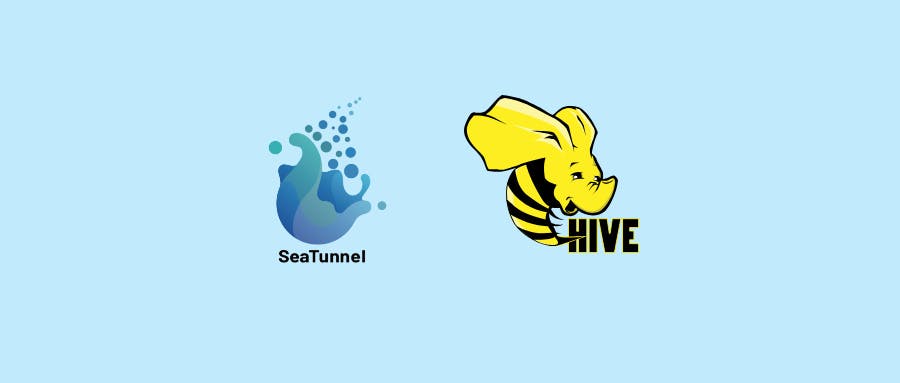In a complex big data ecosystem, efficient data flow and integration are key to unlocking data value. Apache SeaTunnel is a high-performance, distributed, and extensible data integration framework that enables rapid collection, transformation, and loading of massive datasets. Apache Hive, as a classic data warehouse tool, provides a solid foundation for storing, querying, and analyzing structured data.
Integrating Apache SeaTunnel with Hive leverages the strengths of both, enabling the creation of an efficient data processing pipeline that meets diverse enterprise data needs. This article, drawing from the official Apache SeaTunnel documentation, provides a detailed, end-to-end walkthrough of SeaTunnel and Hive integration, helping developers achieve efficient data flow and deep analytics with ease.
Integration Benefits & Use Cases
Benefits of Integration
Combining SeaTunnel and Hive brings significant advantages. SeaTunnel’s robust data ingestion and transformation capabilities enable fast extraction of data from various sources, performing cleaning and preprocessing before efficiently loading it into Hive.
Compared to traditional data ingestion methods, this integration significantly reduces the time from source data to the data warehouse, thereby enhancing data freshness. SeaTunnel’s support for structured, semi-structured, and unstructured data allows Hive to access broader data sources through integration, enriching the data warehouse and providing analysts with more comprehensive insights.
Moreover, SeaTunnel’s distributed architecture and high scalability enable parallel data processing on large datasets, improving efficiency and reducing resource usage. Hive’s mature query and analysis capabilities then empower downstream insights, forming a full loop from ingestion through transformation to analysis.
Use Cases
This integration is widely applicable. In enterprise data warehouse construction, SeaTunnel can stream data from business systems—like sales, CRM, or production—into Hive in real time. Data analysts then use Hive to gain deep business insights, supporting strategies, marketing, product optimization, and more.
For data migration scenarios, SeaTunnel enables reliable, fast migration from legacy systems to Hive, preserving data integrity and reducing risk and cost.
In real-time analytics—such as monitoring e-commerce sales—SeaTunnel captures live sales data and syncs it to Hive. Analysts can immediately analyze metrics like sales volume, order counts, and top products, enabling rapid business insights.
Integration Environment Preparation
Recommended Software Versions
For smooth integration of SeaTunnel and Hive, use recent stable versions. SeaTunnel’s latest releases include performance improvements, enhanced features, and better compatibility with various data sources.
For Hive, version 3.1.2 or above is recommended; higher versions offer improved stability and compatibility during integration. JDK 1.8 or higher is required for a stable runtime. Using older JDKs may prevent SeaTunnel or Hive from starting properly or cause runtime errors.
Dependency Configuration
Before integration, configure relevant dependencies. For SeaTunnel, ensure Hive-related libraries are available. Use SeaTunnel’s plugin mechanism to download and install the Hive plugin.
Specifically, obtain the Hive connector plugin from SeaTunnel’s official plugin repository and place it into the pluginsdirectory of your SeaTunnel installation. If building via Maven, add the following dependencies to your pom.xml:
<dependency>
<groupId>org.apache.hive</groupId>
<artifactId>hive-common</artifactId>
<version>3.1.2</version>
</dependency>
<dependency>
<groupId>org.apache.hive</groupId>
<artifactId>hive-metastore</artifactId>
<version>3.1.2</version>
</dependency>
Ensure Hive can be accessed by SeaTunnel—for example, if Hive uses HDFS, SeaTunnel’s cluster must have correct read/write permissions and directory access. Configure Hive metastore details (e.g., metastore-uris) so SeaTunnel can retrieve table schemas and other metadata.
Apache SeaTunnel & Hive Integration Steps
Install SeaTunnel and Plugins
Download the appropriate SeaTunnel binary from the official site, extract it, and confirm folders like bin, conf, and plugins exist. Place the Hive plugin JAR in plugins, or build via Maven and run mvn clean install.
To verify installation and plugin loading, run a bundled example:
./seatunnel.sh --config ../config/example.conf
Configure SeaTunnel–Hive Connection
In your SeaTunnel YAML config, define the Hive source:
source:
- name: hive_source
type: hive
columns:
- name: id
type: bigint
- name: name
type: string
- name: age
type: int
hive:
metastore-uris: thrift://localhost:9083
database: default
table: test_table
Then define the Hive sink:
sink:
- name: hive_sink
type: hive
columns:
- name: id
type: bigint
- name: name
type: string
- name: age
type: int
hive:
metastore-uris: thrift://localhost:9083
database: default
table: new_test_table
write-mode: append
Use append to add data without overwriting; other modes like overwriteclear the table before writing.
Launch SeaTunnel for Data Sync
Run your config with:
./seatunnel.sh --config ../config/your_config.conf
Monitor logs to track progress or capture errors. If errors occur, verify configuration paths, dependencies, and network connections.
Data Sync in Practice
Full Data Synchronization
Sync all data from a Hive table at once:
source:
- name: full_sync_source
type: hive
columns: [...]
hive:
metastore-uris: thrift://localhost:9083
database: default
table: source_table
sink:
- name: full_sync_sink
type: hive
columns: [...]
hive:
metastore-uris: thrift://localhost:9083
database: default
table: target_table
write-mode: overwrite
Use overwrite to replace existing data.
Incremental Data Synchronization
Sync only newly added or updated data:
source:
- name: incremental_sync_source
type: hive
columns: [...]
hive:
metastore-uris: thrift://localhost:9083
database: default
table: source_table
where: update_time > '2024-01-01 00:00:00'
sink:
- name: incremental_sync_sink
type: hive
columns: [...]
hive:
metastore-uris: thrift://localhost:9083
database: default
table: target_table
write-mode: append
Update the where filter based on the last sync timestamp.
Integration Tips & Troubleshooting
Notes on Integration
- Data consistency: Ensure no duplication or missing data during full/incremental sync by accurate update tracking.
- Transformation correctness: Verify any type conversions, computations, or cleansing rules.
- Performance optimization: Adjust parallelism, Hive storage formats, and indexes.
Common Issues & Fixes
- Cannot connect to Hive metastore: Check
metastore-urisand network connectivity. - Data type mismatch errors: Ensure SeaTunnel
columnsmatch Hive schema. - Performance bottlenecks: Optimize parallelism and table formats.
- Use community resources: Leverage SeaTunnel and Hive docs/forums for troubleshooting.











